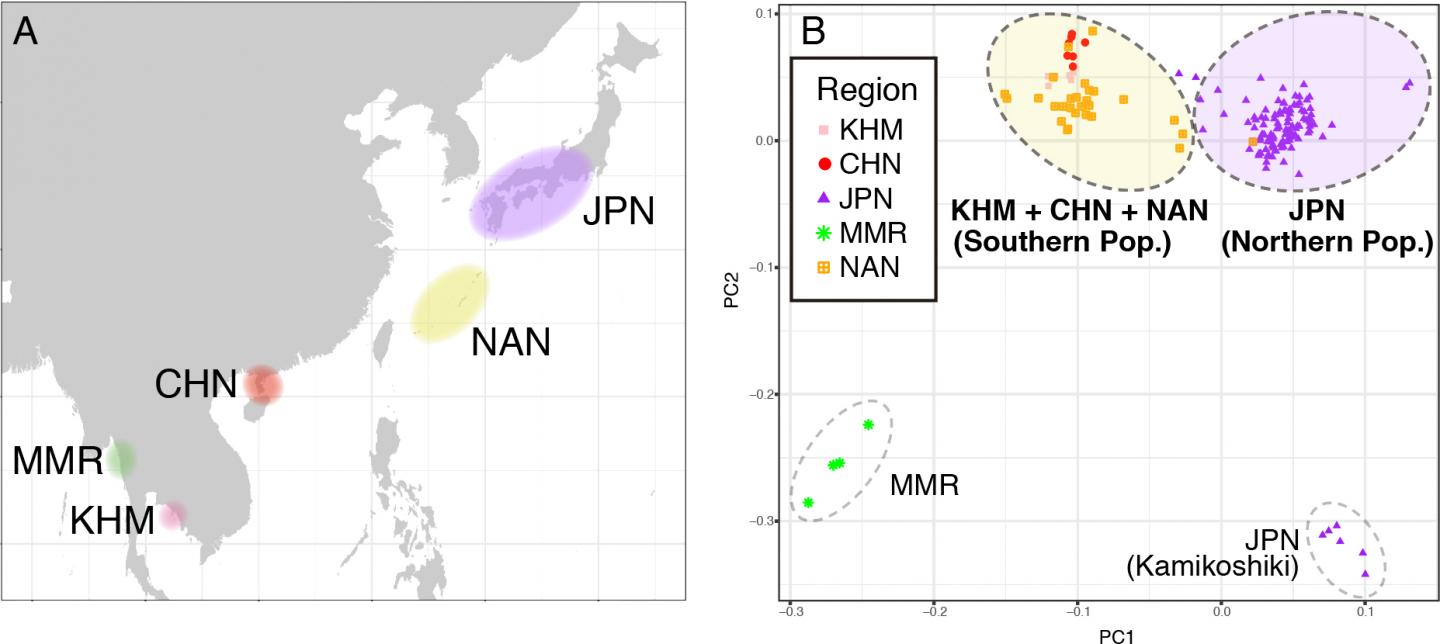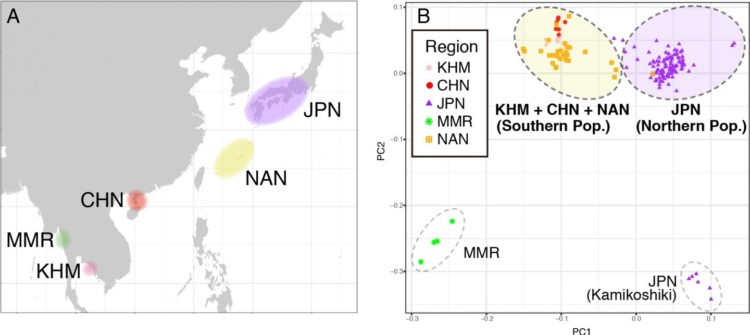Scientists study the dynamic interplay between genome and the environment in Japanese pearl oysters

Credit: OIST
Since the late 19th century, pearl aquaculture has been a revered industry in Japan, enabling widespread cultivation and commercialization of beautiful pearls. From a genetic and evolutionary perspective, scientists have known little about the source of these pearls – the Japanese pearl oyster, Pinctada fucata – until now.
Researchers in the Marine Genomics Unit at the Okinawa Institute of Science and Technology Graduate University (OIST), in collaboration with scientists from Mie Prefecture, Japan, have, using genome-wide genetic data from specimens collected across the western Pacific, elucidated how pearl oyster populations vary genetically and geographically. Their analyses provide insight into how these pearl oysters have adapted to environmental changes over time. Understanding the genetic structure of these populations will be crucial for developing effective and targeted conservation strategies for the species in light of climate change, the researchers said.
“In particular we wanted to understand the population structure of P. fucata and how these pearl oysters moved from the southwestern Pacific (of which Okinawa is a part), north, to mainland Japan,” said Dr. Takeshi Takeuchi, the first author of the new study, published in Evolutionary Applications. “P. fucata is a good model for understanding genetic differentiation because the species is so widespread across the western Pacific.”
Cracking the pearl oyster genome
After a century of success, Japanese pearl production plummeted during the 1990s due to detrimental algal blooms and an outbreak of bacterial disease, both of which damaged pearl oyster populations. Additionally, during this time, pearl farmers introduced Chinese pearl oysters into Japanese waters, threatening the genetic diversity of the P. fucata population.
To better understand and conserve these animals, the scientists analyzed about 200 individual P. fucata specimens from across mainland Japan, the southern Nansei Archipelago, including sites near Okinawa, along with China, Myanmar, and Cambodia. In order to minimize the effect of recent intermingling between Japanese and Chinese populations, they used frozen specimens collected between 2000 and 2003. They sequenced the genomes of the specimens and analyzed 36,203 single nucleotide polymorphism (SNP) sites. SNPs are tiny differences in DNA’s building blocks that help scientists study genetic variation.
Takeuchi and his colleagues found that pearl oysters in mainland Japan (the northern population) are genetically distant from the southern population in the Nansei Islands, China, and Cambodia.
However, the researchers could not understand why pearl oysters in the Japanese mainland and Nansei Islands were genetically distinct, since they weren’t separated by a land barrier. Due to the strong Kuroshio Current, the oysters could easily be propelled from Nansei to the mainland, mixing the populations.
To solve this mystery, the scientists looked at environmental factors that might influence genetic diversification, including sea surface temperature, oxygen, carbon dioxide, phosphate, and nitrate levels in the water, as well as ocean salinity.
Through statistical analyses, they found that sea surface temperature and oxygen concentration strongly correlated with genetic variation. The mainland and Nansei populations are likely distinct because they adapted to local environmental conditions, the researchers said.
Traveling back in time
These findings then helped the researchers piece together P. fucata‘s history. During the Last Glacial Maximum (about 20,000 years ago), ocean surface temperatures were much lower than present day, and P. fucata populations were absent in the Japanese mainland. After the last glacial period, however, temperatures in Japan increased and peaked 6,000 years ago at two to three degrees higher than present, and the pearl oyster populations moved north to mainland Japan.
Moving forward, the researchers hope to continue studying the pearl oysters’ genes, since climate change and increasing ocean temperatures may affect P. fucata‘s distribution.
“Using genome-wide data, we revealed population structure of the pearl oyster in the western Pacific,” said Takeuchi. “We are now developing DNA markers to distinguish the Japanese population from others. This will be useful for conserving the unique genetic resources of the Japanese pearl oysters,” said Takeuchi.
###
Media Contact
Tomomi Okubo
[email protected]
Original Source
https:/
Related Journal Article
http://dx.





